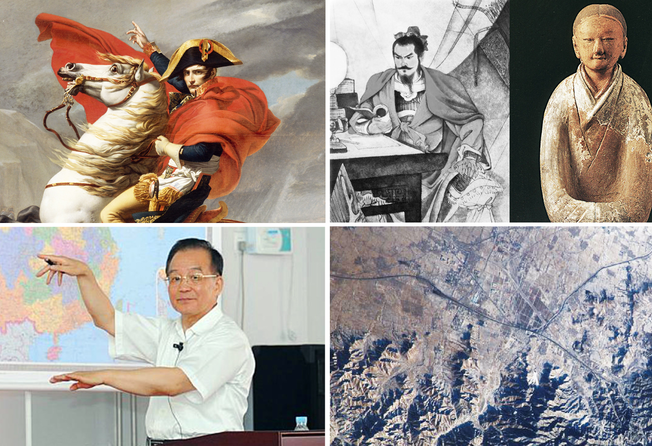
From Napoleon to Great Wall's stature in space: Top 5 Chinese school textbook controversies

Errors in official Chinese school textbooks are a hot topic for the mainland media, with stories about mistakes and misrepresentations providing a rare and relatively safe opportunity for the public to criticise the government.
While provinces are permitted to publish their own primary school textbooks, content is shared across books which may be read by millions of readers for generations, making the potential cost of mistakes incredibly high.
While the Chinese authorities do not generally allow people to discuss politically sensitive issues, such as the authenticity of certain national martyrs' biographies, criticisms of technical errors are usually tolerated by the censors, and some mistakes even get corrected. SCMP reporters have sifted through some of the more egregious errors, ranking them by duration, impact, and controversy.
Napoleon Bonaparte was a fan of China
Many Chinese citizens have a good impression of the European conqueror due to a quote that was attributed to him for decades: "China is a sleeping lion. When she wakes, she will shake the world." That in turn was a mutation of a far more critical quote, which may or more likely may not have actually been spoken by the French emperor: "China is a sleeping lion. Let her sleep, for when she wakes she will shake the world." During a visit to France in 2014, President Xi Jinping recited the quote, adding: "Today the lion has woken up. But it is peaceful, pleasant and civilised."
Historical Chinese figures used chairs
One of the most common mistakes in illustrations used by history and language textbooks, chairs and desks did not appear in China until the Tang Dynasty (AD 618-690 & AD 705-907) but many historical figures are often pictured surrounded by and seated on modern furnishings. People in dynasty-era China had good reason not to use chairs, they wore long cloaks instead of trousers, and sat on their heels for better cover of their intimate areas, according to historians.
The crow and pitcher
One of Aesop's fables, The Crow and Pitcher involves a thirsty crow dropping pebbles into a pitcher with water at the bottom until the liquid rises high enough for its beak to reach in and drink it. Though scientists have observed similar behaviour in ravens and other corvids in the wild, it is highly debatable whether the technique would work every time, as some Chinese textbooks implied. Chinese internet users conducted many experiments and found that the bottle had to be at least half full, and the rise in water level also depended on the size of pebbles and shape of the bottle.
Shaanxi and Gansu provinces are part of northern China
This question was raised by then Premier Wen Jiabao during a visit to a Beijing high school geography class in 2009. The textbook said yes, the premier said no. The debate spurred by Wen's refutation of the "official" answer helped the public realise just how difficult it was to correct textbook mistakes. Against the protests of the publisher, SinoMaps Press, Wen, a trained geologist, pointed out that Shaanxi and Gansu were geologically related to western China, and "northern China" should only include Hebei, Beijing and Tianjin. A compromise was made a year later, with "northern China" being replaced by the more encompassing descriptor "the North" which also included northeastern provinces.
The Great Wall is visible from space
A common misconception in the West as well as China, this claim was conclusively disproven by the invention of space travel. Yang Liwei, the first Chinese person in space, returned to Earth in 2003 somewhat dejected. "The planet looked very beautiful from space, but I did not see our Great Wall," he told CCTV. Yang's expectation was understandable, despite satellite images and the personal accounts of foreign astronauts stating the opposite, many Chinese textbooks still taught that the Wall was visible from orbit. A year after Yang returned to Earth, the mistake was finally corrected. (One type of man-made construction is visible from space, particularly over China: huge, light-emitting cities.)



